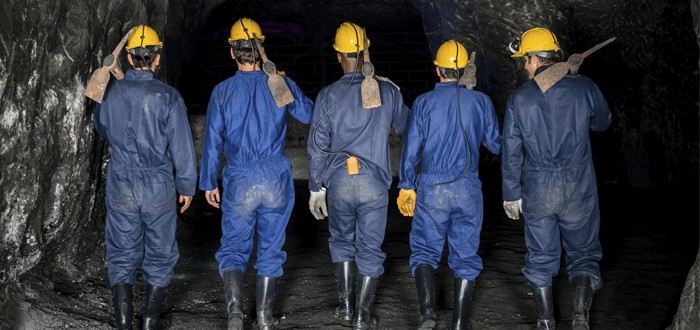Suspicions that exposure to dust from iron ore unearthed in Minnesota causes mesothelioma were fueled by university research made public earlier this month.
The University of Minnesota spent nearly $5 million over the last six years trying to determine why miners working in the state’s Iron Range had mesothelioma rates higher than other Minnesotans.
They were unable to provide a definitive answer, but their findings offered some of the strongest evidence yet of a possible link between the mining of taconite and the development of mesothelioma.
Taconite is a sedimentary rock that contains iron mixed together with carbonate or quartz.
There are a half-dozen taconite mines in Minnesota that extract these rocks from the earth. The mines process them into pellets to later be used by steelmakers.
Taconite is seen as a low-grade ore. Back in the days when the Iron Range was producing vast tons of high-grade ore, the market for taconite was tiny.
That changed by the early 1950s because not much high-grade iron ore was left to be dug up out of the earth in Minnesota. So taconite suddenly became a hot commodity.
Mesothelioma Link to Taconite Explored
Mining and processing of taconite creates lots of dust. Scientists long ago noted that taconite dust contains tiny fibers resembling those of asbestos.
As awareness of the consequences of asbestos exposure grew in the 1970s, taconite miners and health specialists began asking whether inhaled taconite fibers lodged in the lungs could behave like asbestos.
In particular, they wanted to know if taconite fibers could trigger mesothelioma.
The University of Minnesota’s report – entitled “Taconite Workers Health Study” — provides only a partial answer.
Mainly, the research revealed that taconite workers have a mesothelioma death rate three times higher than their fellow Minnesotans.
The researchers reported that the longer a person worked in the taconite mines or processing plants, the more likely he or she was to develop mesothelioma.
Specifically, for every year on the job, the mesothelioma risk increases by 3 percent.
However, the researchers couldn’t determine whether the mesothelioma was from exposure to taconite dust or to asbestos the miners encountered in old construction materials at home and elsewhere.
“Even though we couldn’t pinpoint some of the reasons for mesothelioma we know the mesothelioma is related to working in the industry,” said Jeffrey Mandel, M.D., M.P.H.
Mandel was the principal investigator behind the research, produced by the University of Minnesota’s School of Public Health and its Natural Resources Research Institute.
Mesothelioma Prevention Recommendations
The study contained some good news to temper the bad. It found that Minnesota’s taconite mines and processing facilities generally meet federal air quality standards.
The study also asserted that those facilities normally don’t pose a health threat to workers these days.
The researchers included in their report an assortment of recommendations.
One of them suggests requiring that miners and plant workers wear personal protective equipment while exposed to lots of taconite dust.
Another recommendation called for having the government take a look at the mines’ medical monitoring programs to make sure they’re up to snuff.

